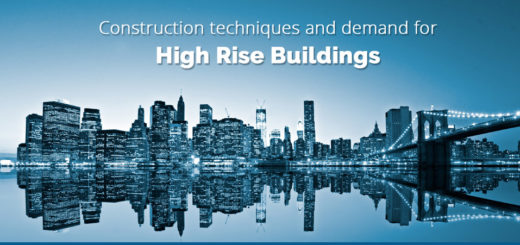High Rise Buildings Evolution and Innovation
At Volta Greens, it is not hard for us to see why high rise buildings have sprung up across the world. As the world moves towards urban settlements and structures, high rise buildings solve a number of problems pertaining to urbanisation.
Some of the biggest reasons why high rise buildings are popular in cities across the world can be seen below:
However, it is important to understand the evolution of high-rise buildings in order to understand how they work. Over the last century, buildings have gotten taller, stronger and more imposing.
As it is clear from the image, high rise buildings have evolved from their early days, and are constantly pushing the limits in their pursuit to reach the skies. However, if you look closely, you’ll find that the technology used in the construction of these buildings has also been changing.
From the shear frames of the early days of high-rise buildings, to the hybrid, tubular systems that are in use today for the tallest buildings of the world, the technology involved in the construction of high rise buildings has been constantly evolving.
1. Majority of structural elements around the perimeter
2. Sides normal to lateral load resist bending
3. Sides parallel to lateral load resist shear
4. Minimize number of interior columns
5. Closely spaced exterior columns
Shear frames are used for buildings that are limited to 30 storeys. A shear frame uses a structure made of high-bending columns and beams. Rigid joints are used to add stability to the entire structure. Shear frames could include both semi-rigid frames and rigid frames.
Today’s high rise skyscrapers use tubular systems that help them to attain greater heights. The tallest buildings in the world today are constantly pushing the limits when it comes to technology and structural systems.

High rise buildings have to be prepared for a number of natural and unnatural factors that might come up at any time during the life of the building. Called ‘loads’, these are factors that might affect the life of a high-rise building.
Loads can be divided into a few basic types:
Gravity Loads
Gravity loads include dead loads, live loads (such as people) and snow loads during winters and snowstorms. The high rise building needs to be able to absorb the loads and not buckle under the pressure.
Lateral Loads
Later loads include wind loads (that high rise buildings are subjected to due to their extreme height), and seismic loads that might be caused due to the geographical conditions of the location where the high rise building is constructed.
Special Load cases
These include impact loads and blast loads. These are unnatural factors, but high rise buildings need to be prepared and insulated against such contingencies.
High rise buildings today are analysed using the Probabilistic Risk Assessment and are prepared to face hazards, both natural as well as unnatural.
Volta Green Structures is proud to be a part of the high-rise revolution. We provide components and engineering technology to high-rise buildings across the world, helping organisations around the world reap the benefits of cold-steel technology and pre-engineered structures.
At Volta Green Structures, it is our constant pursuit to raise the high benchmarks that we have set for ourselves. With accuracy levels of 1 mm, and the freedom to customise even minute parts according to exact requirements, we provide our global partners the many benefits of pre-engineered technology.














